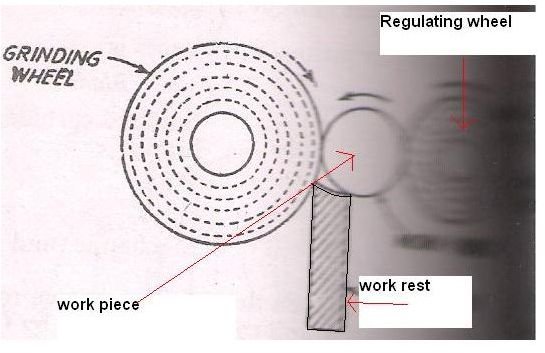How does Centerless Grinding Work ?
Introduction
We have been talking about the process of grinding as related to manufacturing technology, abrasive materials and the techniques used in the manufacture of grinding wheels. All grinding machines are not as simple as a grinding wheel mounted on a motor shaft for rotation, but they can be used for special purposes as well. In this article we will learn how centerless grinding works in comparison to centered grinding, and about the various types of grinding machines in use in the industry.
Types of Grinding Machines
There are several types of grinding machines but they are mainly classified either on the basis of the type of surface that they generate, or simply on the type of work they perform. We will take a brief look at some of the important types of grinding machines as follows.
Centre type grinding machines - as the name itself suggests, a centre type machine requires that the work piece be supported at the centres while the operation of grinding is being performed. There are several machines which can carry out centre type grinding and one such machine is the universal cylindrical grinding machine. This machine can perform a variety of grinding operations in the centre mode such as traverse grinding, taper grinding, and so on.
Centerless grinding machines - the above-mentioned type of machines are useful for repetitive work, but they are not very productive when mass quantities need to be produced. The simple reason for this is that each time a new work piece is inserted in the machine it needs to be centered, which is a time-consuming activity. Hence another technique known as centre-less grinding was invented. As you would guess from the name itself, this method does not require any centering of the work piece. Rather the work piece is held with pressure against the grinding wheel through the use of a resting block and a regulating wheel, which dynamically support the job piece against the wheel.
The picture is a bit hazy but should give you a clear idea about the arrangement and how centerless grinding works.
There are various methods which are used to hold the work piece in place depending on the size and shape of the work piece. For example if the part to be ground has a plain parallel geometry, it can be supported by using through feed, the principal of which can be seen from the adjoining diagram. As you can see in the picture in the work piece is sandwiched between the grinding wheel and the smaller regulating wheel which rotate in the same direction, while the work piece rotates in the opposite direction and is held in place vertically through the use of a work rest. Other methods used include in feed and end feed. The main advantage of using centre-less grinding is that it saves a lot of time and efforts which ultimately result in cost savings.
Both the types of machines mentioned above come in a wide variety of flavours which can be used as appropriate.
